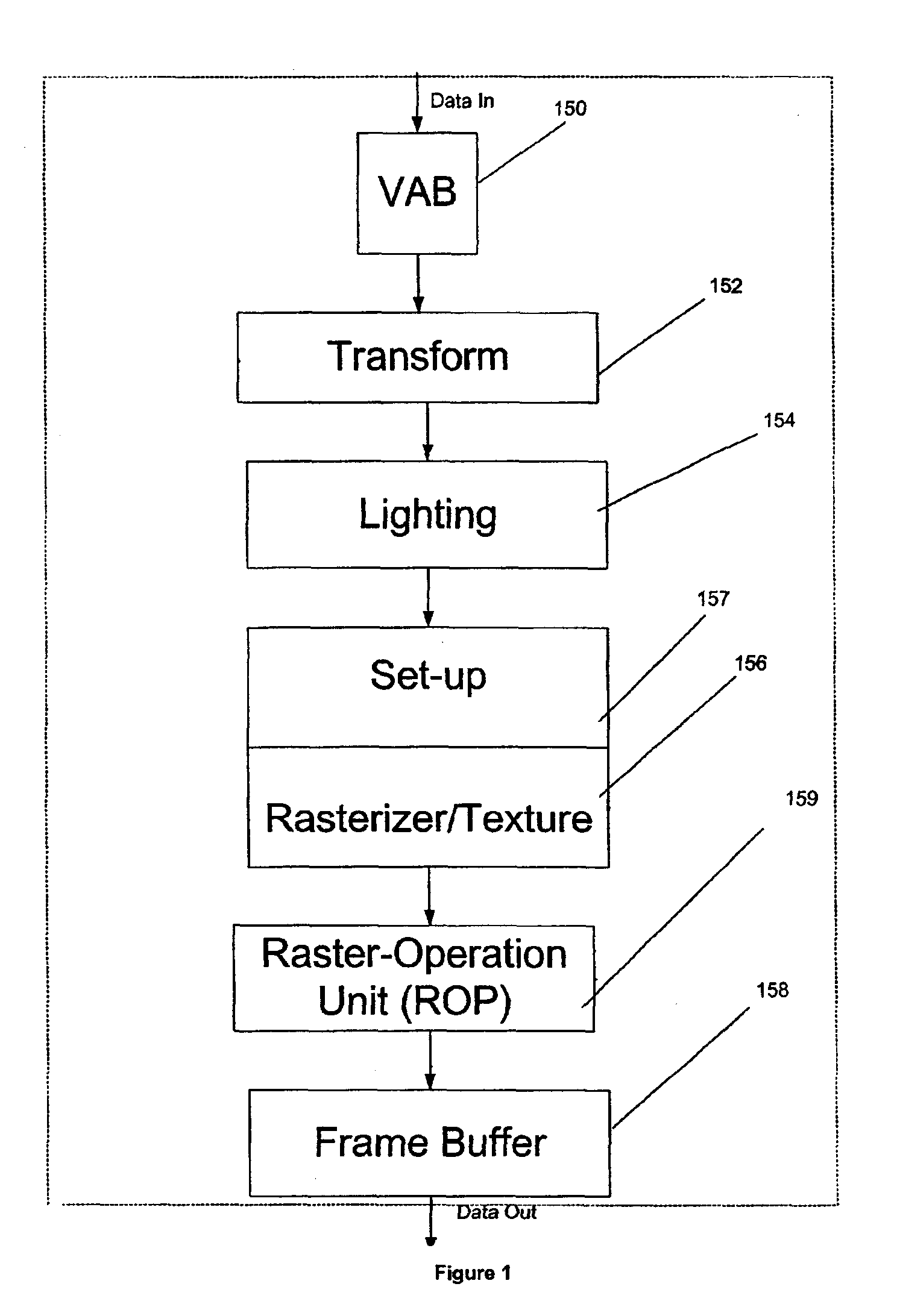Order-independent transparency rendering system and method
a transparency and rendering system technology, applied in the field of computer graphics, can solve the problems of difficult to achieve total visual realism, and difficult to implement transparency in graphics pipelines
- Summary
- Abstract
- Description
- Claims
- Application Information
AI Technical Summary
Benefits of technology
Problems solved by technology
Method used
Image
Examples
Embodiment Construction
[0026]FIG. 1 is a system diagram illustrating the various components of one embodiment of the present invention. As shown, the present embodiment may be divided into a plurality of modules including a vertex attribute buffer (VAB) 150, a transform module 152, a lighting module 154, a rasterization / texturing module 156 with a set-up module 157, a raster-operation module (ROP) 159, and a frame buffer 158.
[0027]In one embodiment, each of the foregoing modules may be situated on a single semiconductor platform. In the present description, the single semiconductor platform may refer to a sole unitary semiconductor-based integrated circuit or chip. It should be noted that the term single semiconductor platform may also refer to multi-chip modules with increased connectivity which simulate on-chip operation, and make substantial improvements over utilizing a conventional CPU and bus implementation. Of course, the various modules may also be situated separately or in various combinations of...
PUM
 Login to View More
Login to View More Abstract
Description
Claims
Application Information
 Login to View More
Login to View More - R&D
- Intellectual Property
- Life Sciences
- Materials
- Tech Scout
- Unparalleled Data Quality
- Higher Quality Content
- 60% Fewer Hallucinations
Browse by: Latest US Patents, China's latest patents, Technical Efficacy Thesaurus, Application Domain, Technology Topic, Popular Technical Reports.
© 2025 PatSnap. All rights reserved.Legal|Privacy policy|Modern Slavery Act Transparency Statement|Sitemap|About US| Contact US: help@patsnap.com



